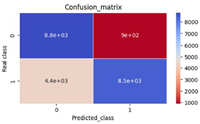The Navier-Stokes equation and a fully developed turbulence
Abstract
In fairly general conditions we give explicit (smooth) solutions for the potential flow. We show that, rigorously speaking, the equations of the fluid mechanics have not rotational solutions. However, within the usual approximations of an incompressible fluid and an isentropic flow, the Navier-Stokes equation has approximate vorticial (rotational) solutions, generated by viscosity. However, in general, these vortices are unstable, and a discrete distribution of vorticial solutions is not in me chanical equilibrium; it forms an unstable vorticial liquid. On the other hand, these solutions may exhibit turbulent, fluctuating instabilities for large variations of the velocity over short distances. We represent a fully developed turbulence as a homogeneous, isotropic and highly-fluctuating distribution of singular centres of turbulence. A regular mean flow can be included. In these circumstances the Navier-Stokes equation exhibits three time scales. The equations of the mean flow can be disentangled from the equations of the fluctuating part, which is reduced to a vanishing inertial term. This latter equation is not satisfied after averaging out the temporal fluctuations. For a homogeneous and isotropic distribution of non-singular turbulence centres the equation for the inertial term is satisfied trivially, i.e. both the average fluctuating velocity and the average fluctuating inertial term are zero. If the velocity is singular at the turbulence centres, we are left with a quasi-ideal classical gas of singularities, or a solution of singularities (solute) in quasi thermal equilibrium in the background fluid (solvent). This is an example of an emergent dynamics. We give three examples of vorticial liquids.
References
[1]Landau L, Lifshitz E. Course of Theoretical Physics. In: Fluid Mechanics. Elsevier; 1989. Volume 6.
[2]Eckert M. The Turbulence Problem. Springer; 2019.
[3]Reynolds, O. On the dynamical theory of the incompressible viscous fluids and the determination of the criterion. Phil. Trans. Roy. Soc. London. 1985; A186: 123–164.
[4]Richardson LF. The supply of energy from and to atmospheric eddies. Proc. Roy. Soc. London. 1920; A97: 354–373.
[5]Richardson LF. Weather Prediction by Numerical Process. Cambridge University Press; 1922.
[6]Prandtl L. The generation of vortices in fluids of small viscosity. J. Roy. Aeronaut. Soc. 1927; 31: 720–741.
[7]Taylor GI. Statistical theory of turbulence. Proc. Roy. Soc. London. 1935; A151: 421–454.
[8]Batchelor GK. The Theory of Homogeneous Turbulence. Cambridge University Press; 1953.
[9]Kolmogorov AN. The local structure of turbulence in incompressible viscous fluid for very large Reynolds numbers. Proc Roy Soc Lond A. 1991; 434: 9–13.
[10]Kolmogorov AN. Dissipation of energy in locally isotropic turbulence. Proc. Roy. Soc. London A. 1991; 434: 15–17.
[11]Obukhov AM. On the distribution of energy in the spectrum of turbulent flow (Russian). Dokl. Akad. Nauk SSSR. 1941; 32: 22–24.
[12]She ZS, Jackson E, Orszag SA. Structure and dynamics of homogeneous turbulence: models and simulations. Proc. Roy. Soc. London 1991; A434: 101–124.
[13]Jimenez J, Wray AA, Saffman PG, Rogalo RS. The structure of intense vorticity in isotropic turbulence. J. Fluid Mech. 1993; 255: 65–90.
[14]Doering CR, Gibbon JD. Applied Analysis of the Navier-Stokes Equations. Cambridge University Press; 1995.
[15]Gibbon JD, Donzis DA, Gupta A, et al. Regimes of nonlinear depletion and regularity in the 3D Navier-Stokes equations. Nonlinearity. 2014; 27: 2605–2625.
[16]Leray J. Sur le mouvement d’un liquide viscueux emplissant l’espace. Acta Mathematica 1934; 63: 193–248.
[17]Saffman PG. Vortex Dynamics. Cambridge University Press; 1992.
[18]Wu JZ, Ma HY, Zhou MD. Vorticity and Vortex Dynamics. Springer; 2006.
[19]Polanco JI, Mueller NP, Krstulovic G. Vortex clustering, polarization and circulation intermittency in classical and quantum turbulence. Nature Commun. 2021; 12: 7090 (1–11).
[20]Mueller NP, Polanco JI, Krstulovic G. Intermittency of velocity circulation in quantum turbulence. Phys. Rev. 2021; X11: 011053.
[21]Apolinario GB, Moriconi L, Pereira RM, Valadao VJ. Vortex gas modelling of turbulent circulation statistics. Phys. Rev. 2020; E102: 041102(R).
[22]Frisch U. Fully developed turbulence and intermittency. In: Ghil M, Benzi R, Parisi G (editors). Turbulence and Predictability in Geophysical Fluid Dynamics and Climate Dynamics. Int. School of Physics Enrico Fermi; 1985.
[23]Landau L, Lifshitz E. Course of Theoretical Physics. In: Statistical Physics. Pergamon; 1980. volume 5.
[24]Anderson PW. More is different. Science. 1972; 177: 393–396.
[25]Lin CC. On the motion of vortices in two-dimensions, I, II. Proc. Nat. Acad. Sci. USA. 1941; 27: 570–577.
[26]Lin CC. On the Motion of Vortices in Two Dimensions. University of Toronto Press; 1943.
[27]Onsager L. Statistical hydrodynamics. Suppl. to Nuovo Cimento. 1949; 6: 279–287.
[28]Montgomery D, Joyce G. Statistical mechanics of “negative temperature” states. Phys. Fluids. 1974; 17: 1139–1145.
[29]Chorin AJ. Vorticity and Turbulence. Springer Publishing; 1994.
[30]Berezinsky VI. Destruction of long-range order in one-dimensional and two-dimensional systems having a continuous symmetry group. I. Classical systems. Sov. Phys.-JETP. 1971; 32: 493–500 (1971 ZhETF 59: 907–920).
[31]Berezinsky VI. Destruction of long-range order in one-dimensional and two-dimensional systems having a continuous symmetry group. II. Quantum systems. Sov. Phys.-JETP. 1972; 34: 610–616 (1972 ZhETF 61: 1144–1156).
[32]Kosterlitz JM, Thouless DJ. Ordering, metastability and phase transitions in two-dimensional systems. J. Phys. 1973; C6: 1181–1203.
[33]Migdal AA. Loop equation and area law in turbulence. Int. J. Mod. Phys. 1994; A09: 1197–128.
[34]Sommerfeld A. Vorlesungen ueber Theoretische Physik, Band II. In: Mechanik der Deformierbaren Medien. Akad. Verlagsgesellschaft Leipzig; 1970.
Copyright (c) 2024 Marian Apostol

This work is licensed under a Creative Commons Attribution 4.0 International License.











